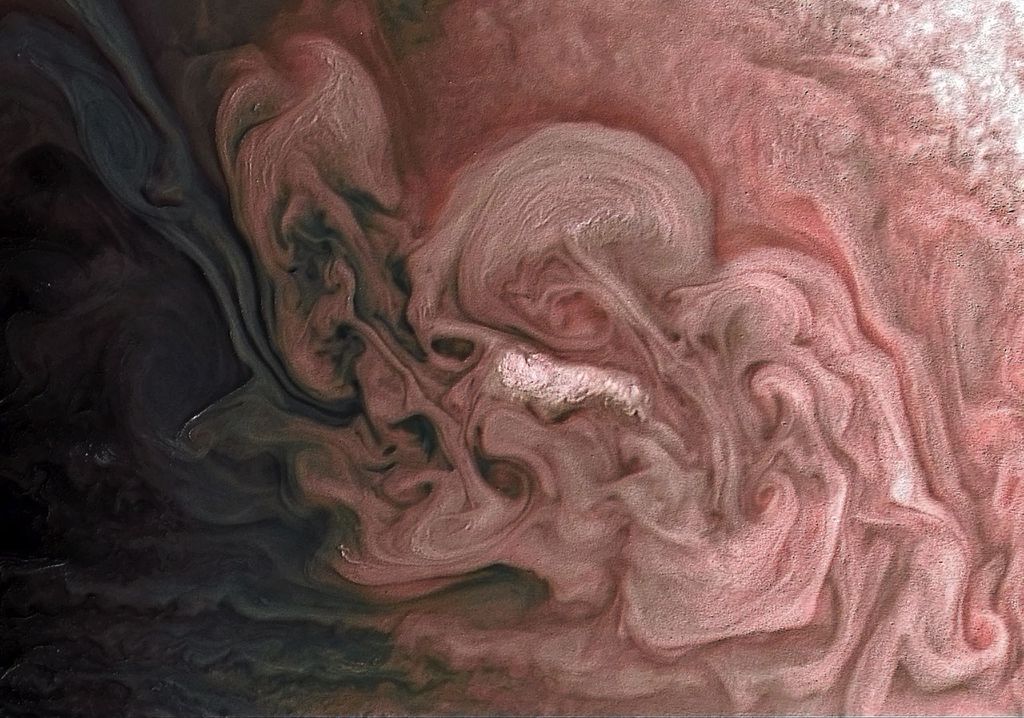1 min read
Distant Galaxy in GOODS-North

The core of an emerging galaxy is ablaze with newly formed stars in this never-before-seen view of the early construction phase of an elliptical galaxy. Astronomers spotted the glowing core in this Hubble Space Telescope image from the Great Observatories Origins Deep Survey (GOODS). The arrow in the enlarged inset image points to the growing galaxy's bright, compact core. The galaxy is seen as it appeared 11 billion years ago, just 3 billion years after the Big Bang.
Although only a fraction of the size of the Milky Way, the tiny powerhouse galaxy already contains about twice as many stars as our galaxy, all crammed into a region only 6,000 light-years across. The Milky Way is about 100,000 light-years across. Astronomers think the newly formed galaxy will continue to grow, possibly becoming similar to the giant elliptical galaxies seen today. This barely visible galaxy may be representative of a much larger population of similar objects that are obscured by dust.
The image combines observations taken in near-infrared light with the Wide Field Camera 3 and exposures made in visible light with the Advanced Camera for Surveys.
About the Object
- R.A. PositionR.A. PositionRight ascension – analogous to longitude – is one component of an object's position.12h 36m 27.73s
- Dec. PositionDec. PositionDeclination – analogous to latitude – is one component of an object's position.62° 7' 12.77"
- ConstellationConstellationOne of 88 recognized regions of the celestial sphere in which the object appears.Fornax
- DistanceDistanceThe physical distance from Earth to the astronomical object. Distances within our solar system are usually measured in Astronomical Units (AU). Distances between stars are usually measured in light-years. Interstellar distances can also be measured in parsecs.z=2.3
About the Data
- Data DescriptionData DescriptionProposal: A description of the observations, their scientific justification, and the links to the data available in the science archive.
Science Team: The astronomers who planned the observations and analyzed the data. "PI" refers to the Principal Investigator.Hubble data for this release were obtained from the following proposals: 12177: P. van Dokkum (Yale University) et al. A multitude of archival HST data was used for these findings, including, but not limited to: grism spectroscopy data from the 3D-HST survey which contains areas within the GOODS fields and WFC3/F160W from the CANDELS survey. The science team comprises: E. Nelson and P. van Dokkum (Yale University), M. Franx (Leiden Observatory, The Netherlands), G. Brammer (STScI), I. Momcheva (Yale University), N. Forster Schreiber (Max Planck Institute for Extraterrestrial Physics, Garching, Germany), E. da Cunha (Max Planck Institute for Astronomy, Heidelberg, Germany), L. Tacconi (Max Planck Institute for Extraterrestrial Physics, Garching, Germany), R. Bezanson (Steward Observatory/University of Arizona), A. Kirkpatrick (University of Massachusetts, Amherst), J. Leja (Yale University), H.-W. Rix (Max Planck Institute for Astronomy), R. Skelton (South African Astronomical Observatory), A. van der Wel (Max Planck Institute for Astronomy), K. Whitaker (Goddard Space Flight Center), and S. Wuyts (Max Planck Institute for Extraterrestrial Physics). - InstrumentInstrumentThe science instrument used to produce the data.HST>ACS/WFC and HST>WFC3/IR
- FiltersFiltersThe camera filters that were used in the science observations.ACS/WFC: F814W and F850LP WFC3/IR: F125W and F160W
- Object NameObject NameA name or catalog number that astronomers use to identify an astronomical object.GOODS-N-774, "Sparky"
- Object DescriptionObject DescriptionThe type of astronomical object.Distant Galaxy in GOODS-North Field
- Release DateAugust 27, 2014
- Science ReleaseNASA Telescopes Help Uncover Early Construction Phase of Giant Galaxy
- Credit

This image is a composite of separate exposures acquired by the ACS/WFC and WFC3/UVIS instruments. Several filters were used to sample various wavelengths. The color results from assigning different hues (colors) to each monochromatic (grayscale) image as follows: Blue: F814W + F850LP Green: F125W Red: F160W

Related Images & Videos

Artist's View of a Dense Galaxy Core Forming
This illustration reveals the celestial fireworks deep inside the crowded core of a developing galaxy, as seen from a hypothetical planetary system. The sky is ablaze with the glow from nebulae, fledgling star clusters, and stars exploding as supernovae. The rapidly forming core...
Share
Details
Claire Andreoli
NASA’s Goddard Space Flight Center
Greenbelt, Maryland
claire.andreoli@nasa.gov































